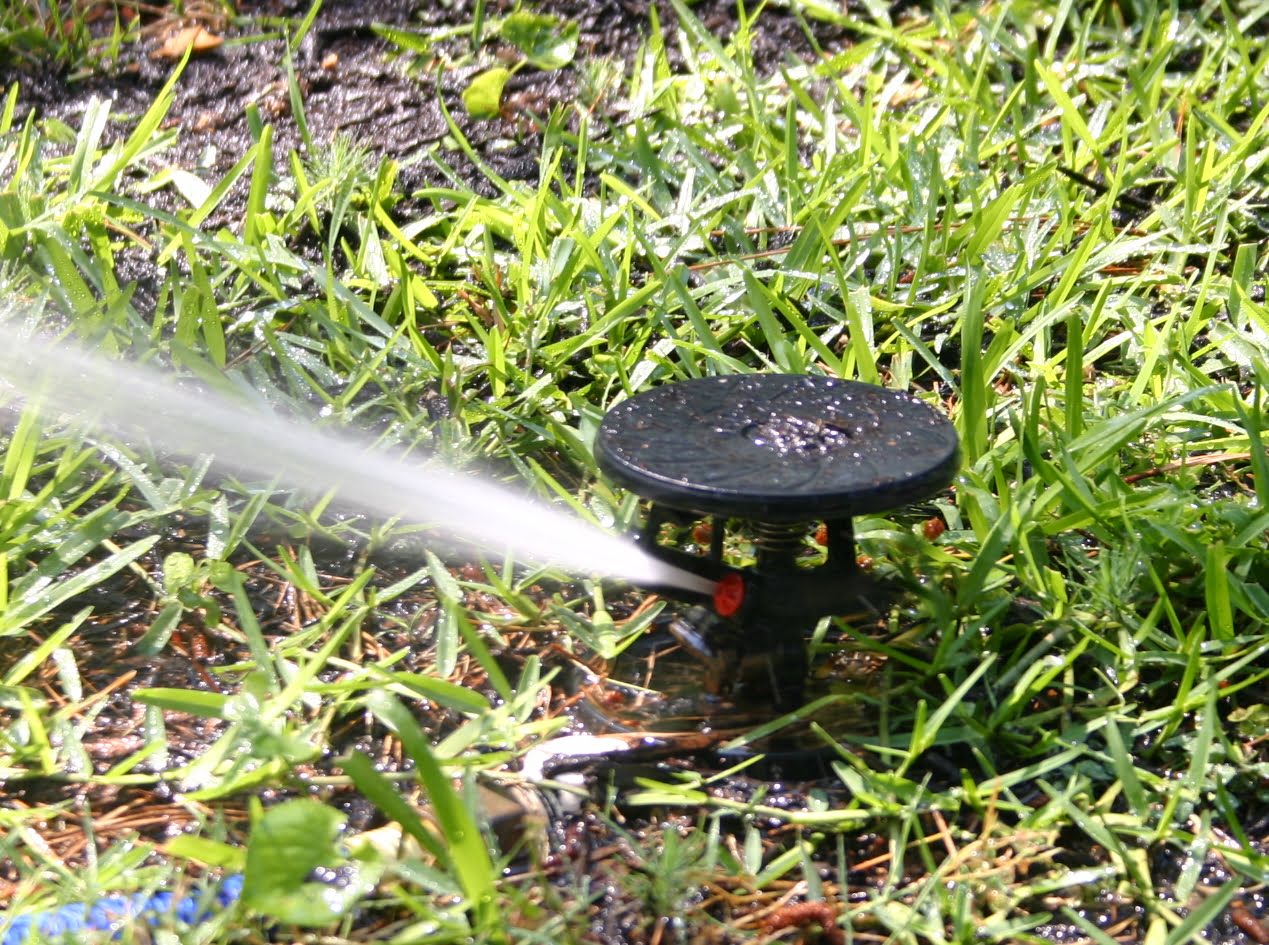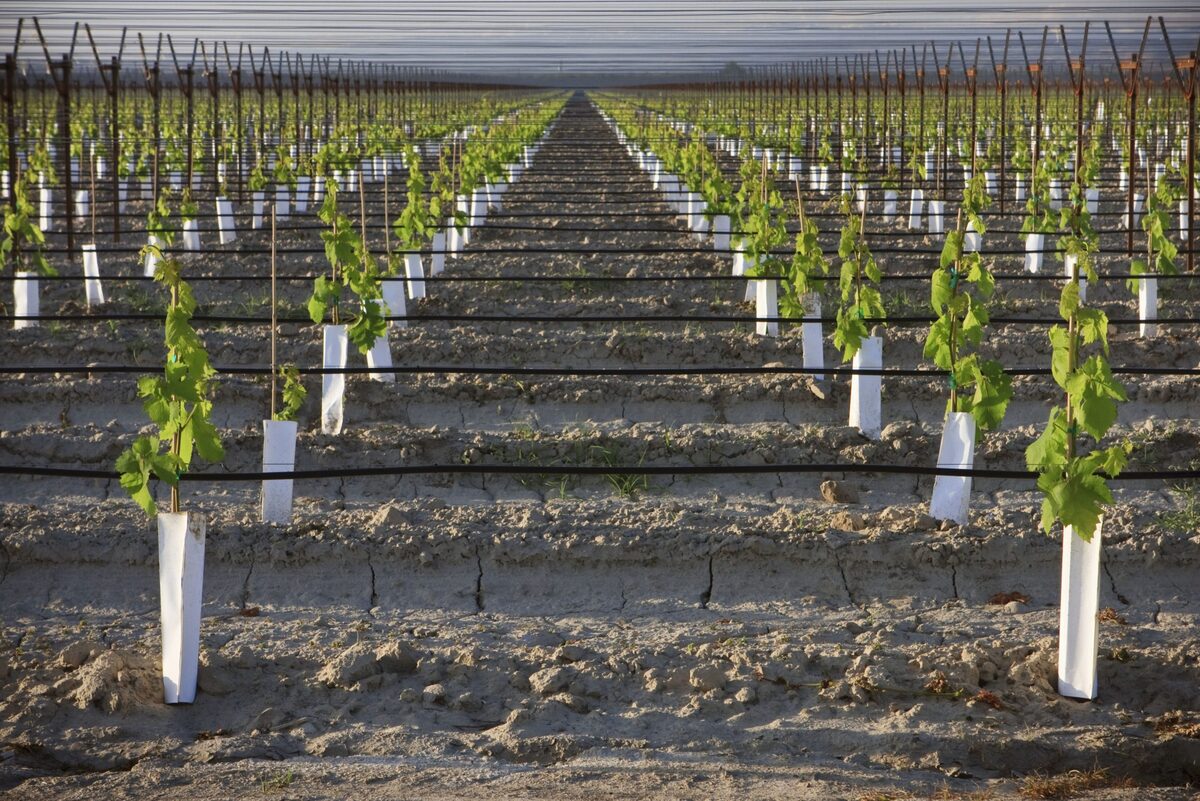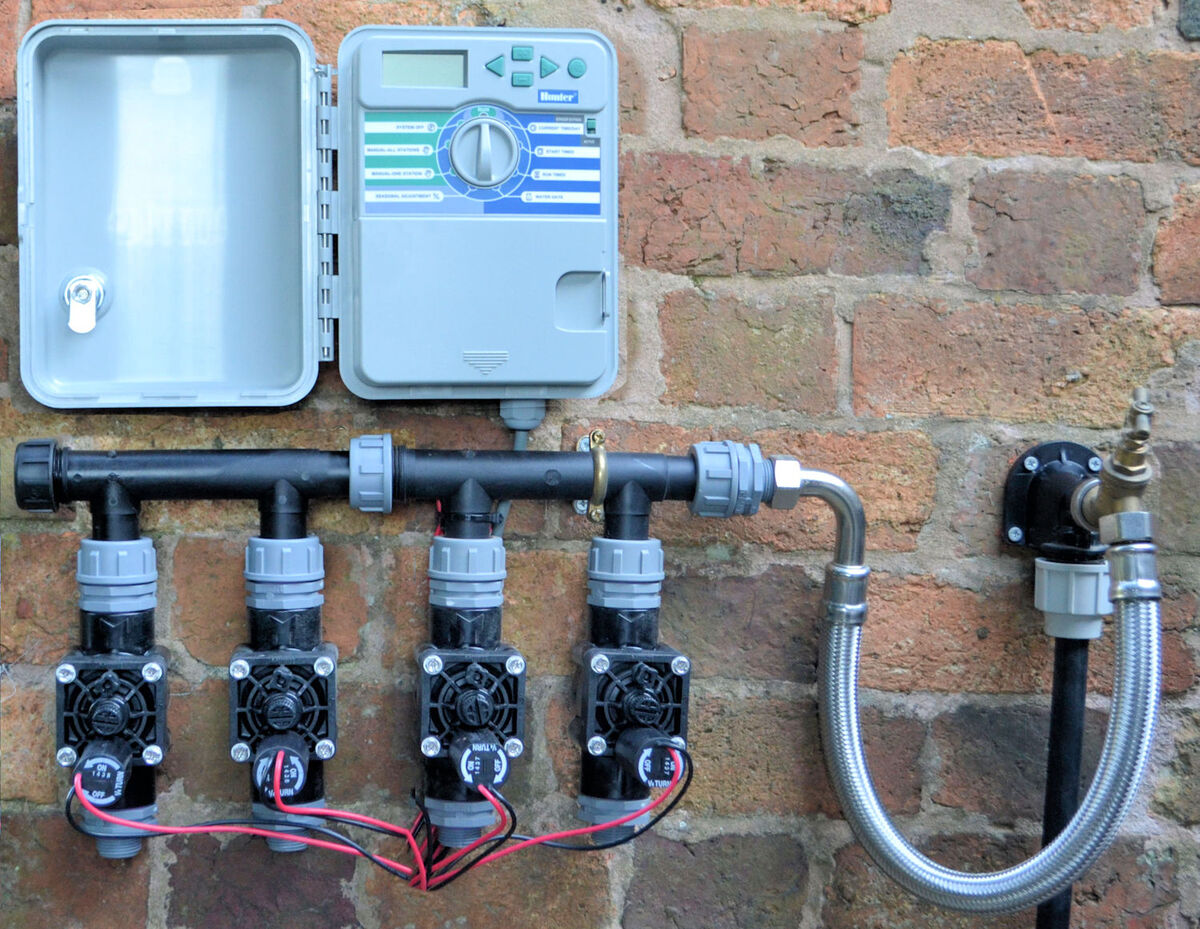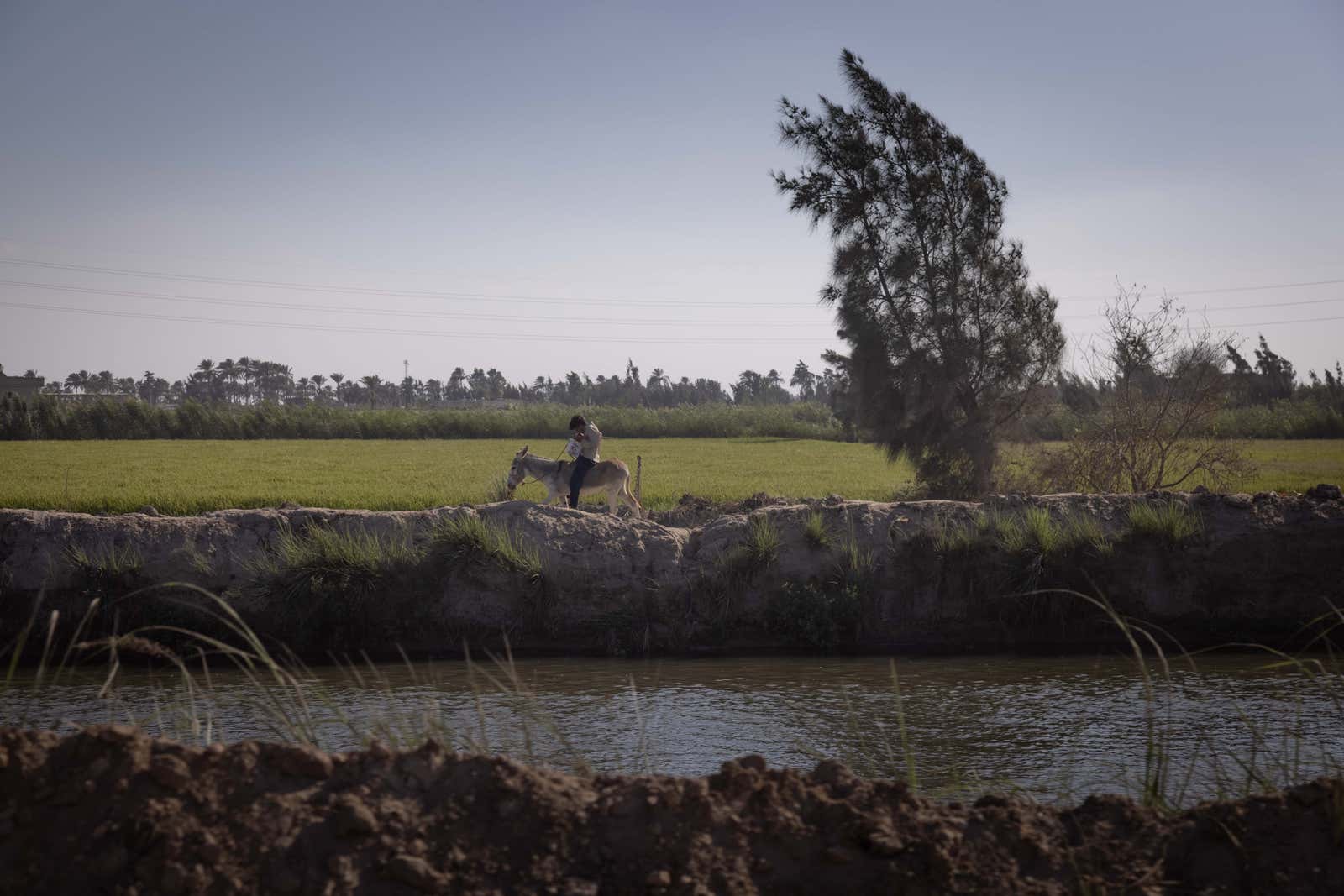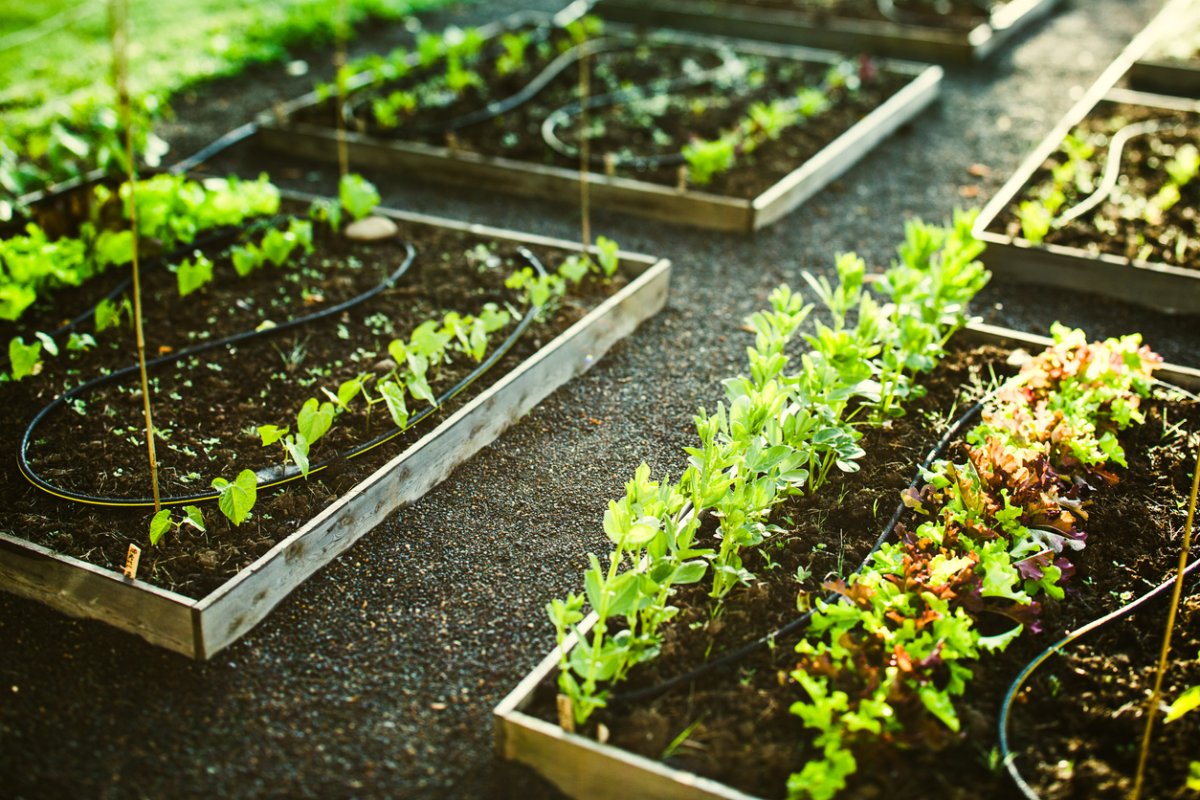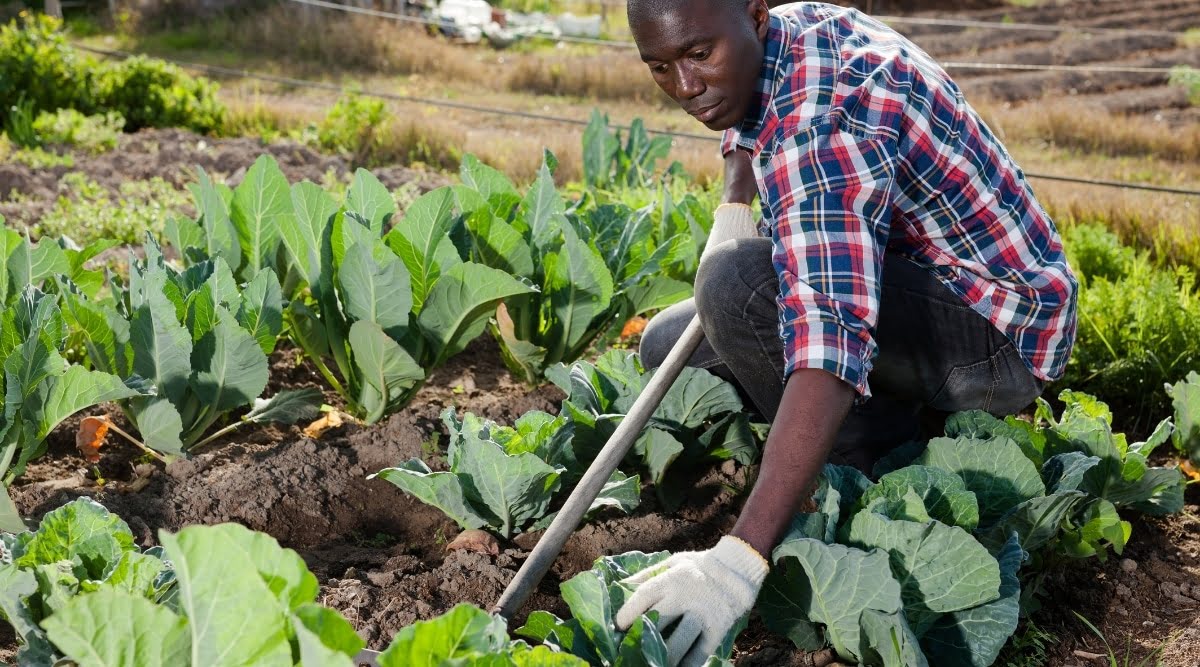Home>Gardening News and Trends>Latest News>What Role Did Irrigation Systems Play In The Development Of Civilizations?


Latest News
What Role Did Irrigation Systems Play In The Development Of Civilizations?
Modified: January 22, 2024
Explore the significance of irrigation systems in the evolution of civilizations and discover the latest news on their role in societal development and sustainability.
(Many of the links in this article redirect to a specific reviewed product. Your purchase of these products through affiliate links helps to generate commission for Chicagolandgardening.com, at no extra cost. Learn more)
Table of Contents
- Introduction
- Definition of Irrigation Systems
- Historical Context of Irrigation Systems
- Importance of Irrigation Systems in Agricultural Development
- Impact of Irrigation Systems on Population Growth
- Role of Irrigation Systems in the Rise of Civilization
- Case Studies of Civilizations that Developed Due to Irrigation Systems
- Advancements in Irrigation Systems
- Challenges and Limitations of Irrigation Systems
- Sustainability and Environmental Impact of Irrigation Systems
- Conclusion
Introduction
Water is a precious resource necessary for the survival and prosperity of civilizations. Throughout history, human societies have developed various techniques to harness and distribute water for agricultural purposes. One of the most significant advancements in this regard is the advent of irrigation systems.
Irrigation systems can be defined as artificial structures and methods designed to supply water to crops in order to enhance agricultural production. These systems have played a crucial role in shaping the development of civilizations around the world. By providing a reliable water supply, irrigation systems have enabled communities to settle in areas that would otherwise be unsuitable for agriculture, leading to increased food production, population growth, and the emergence of complex societies.
The historical significance of irrigation systems cannot be overstated. As human settlements began to transition from nomadic lifestyles to settled agricultural communities, the need for a steady water supply became paramount. Early civilizations realized the importance of controlling and distributing water for agriculture, leading to the development of various techniques such as canals, dikes, and wells.
The advent of irrigation systems allowed civilizations to overcome the limitations of rainfall-dependent agriculture. By diverting water from rivers, lakes, and underground sources, civilizations could cultivate crops throughout the year, regardless of weather patterns. This revolutionary development not only increased agricultural productivity but also provided a stable food supply, paving the way for population growth, trade, and cultural evolution.
In this article, we will explore the profound impact that irrigation systems have had on the development of civilizations. We will examine how these systems have transformed arid and semi-arid regions into flourishing agricultural hubs, leading to the rise of complex societies. Additionally, we will delve into specific case studies of civilizations that owe their growth and prosperity to the implementation of irrigation systems.
Definition of Irrigation Systems
Before delving into the historical context and significance of irrigation systems, it is important to understand their definition and purpose. Irrigation systems can be broadly defined as a set of artificial methods and structures designed to supply water to agricultural lands for crop cultivation.
The primary goal of irrigation systems is to supplement or replace natural rainfall in order to meet the water requirements of crops. By providing a controlled and reliable water supply, these systems help to maximize agricultural productivity and ensure the sustainability of food production.
Irrigation systems utilize various techniques and technologies to transport water from its source to the fields. These techniques can range from simple methods like manual watering with buckets to more sophisticated systems such as canals, pumps, sprinklers, and drip irrigation.
Canals form a significant component of many irrigation systems. They are constructed to divert water from lakes, rivers, or reservoirs and distribute it across the agricultural lands. Canals can be designed to carry water over long distances, and their network can be extensive, covering vast areas.
Pumps are another vital element of modern irrigation systems. They enable the lifting and transport of water from groundwater sources or water bodies with lower elevation to higher-lying fields. The use of pumps has revolutionized agriculture by making it possible to irrigate areas that are geographically distant from natural water sources.
Sprinkler systems involve the use of overhead pipes and fittings that distribute water over the fields in a manner similar to rainfall. This method is particularly efficient in water conservation as it minimizes evaporation and wastage.
Drip irrigation has gained popularity in recent years due to its precision water delivery. It involves the use of tubes or pipes with small emitters that release water directly to the plant roots, reducing water loss through evaporation and runoff. Drip irrigation is useful in water-scarce regions and can significantly increase water use efficiency.
Overall, irrigation systems encompass a diverse set of methods used to control, distribute, and utilize water for agricultural purposes. They have been critical in transforming arid and semi-arid regions into productive agricultural zones, playing a crucial role in the growth and development of civilizations.
Historical Context of Irrigation Systems
The practice of irrigation dates back thousands of years and has been instrumental in the development and sustenance of civilizations. Early evidence of irrigation can be traced as far back as ancient Egypt and Mesopotamia, where society’s dependence on agriculture prompted the need for controlled water supply.
In ancient Egypt, the Nile River played a vital role in the development of irrigation systems. The annual flooding of the Nile provided fertile soil and served as a natural irrigation mechanism for crops. The Egyptians built canals and dikes to redirect the floodwaters, ensuring that water would reach their fields even during the dry seasons. This innovative approach allowed them to cultivate crops all year round and sustain a prosperous civilization.
Mesopotamia, often considered the birthplace of civilization, was characterized by an intricate irrigation system known as the qanat. This system involved digging underground channels to tap into groundwater sources and distribute water to agricultural lands. The qanat not only provided water for irrigation but also allowed for the establishment of permanent settlements along the fertile Mesopotamian plains.
In ancient China, irrigation systems played a crucial role in the development of the agricultural sector. The construction of canals and ditches allowed farmers to access water from rivers and divert it to their fields. The Chinese also developed advanced techniques such as terracing on hilly terrains to conserve water and optimize crop productivity.
The Romans, known for their engineering prowess, furthered the development of irrigation systems during the height of the Roman Empire. Their aqueducts were a remarkable feat of engineering, enabling the transportation of water over long distances to supply urban areas and agricultural lands. These intricate systems allowed the Roman Empire to expand its agricultural production, sustain its population, and support the growth of its cities.
Throughout history, civilizations across the globe recognized the importance of controlling water distribution for agricultural purposes. The establishment of sophisticated irrigation systems not only ensured food security but also fueled economic growth and societal development. As civilizations advanced, so did their irrigation techniques, leading to the emergence of more efficient and sustainable systems.
The historical context of irrigation systems highlights their significance as a critical factor in the rise and prosperity of ancient civilizations. The ability to harness water resources for agriculture enabled societies to overcome environmental challenges and establish stable and thriving communities.
Importance of Irrigation Systems in Agricultural Development
Irrigation systems play a pivotal role in agricultural development, enabling societies to maximize crop production, enhance food security, and promote economic growth. The importance of these systems lies in their ability to provide a controlled and reliable water supply to agricultural lands, regardless of natural rainfall patterns.
One of the key benefits of irrigation systems is the prevention of crop failure due to inadequate rainfall. By supplementing natural sources of water, these systems ensure that crops receive the necessary moisture for growth, even during dry spells or in regions with low rainfall. This resilience against droughts and unpredictable weather patterns is crucial in safeguarding communities against food shortages and famine.
Irrigation systems also allow for increased agricultural productivity by extending the growing season. In many regions, reliance on rainfall limits the cultivation period to a few months. However, with adequate water supply through irrigation, farmers can grow crops throughout the year, leading to multiple harvests and higher yields.
Moreover, irrigation systems facilitate the cultivation of crops that are not well-suited to the natural conditions of a region. Arid and semi-arid areas, which would otherwise be unsuitable for agriculture, can be transformed into fertile lands through the implementation of irrigation systems. This expansion of arable land not only increases food production but also diversifies agricultural output, allowing for the cultivation of cash crops and the development of specialized farming practices.
In addition to enhancing crop yields, irrigation systems contribute to the sustainable use of land and water resources. By efficiently distributing water, these systems minimize wastage and reduce reliance on freshwater sources. Furthermore, proper drainage systems associated with irrigation prevent waterlogging and salinization, ensuring the long-term viability of agricultural lands.
The economic benefits of irrigation systems are also significant. Reliable access to water for agriculture stimulates rural development, encouraging investment and creating job opportunities in farming communities. Increased agricultural productivity leads to surplus production, which can be traded and exported, contributing to a nation’s economy and fostering economic growth.
The importance of irrigation systems in agricultural development cannot be overstated. These systems have the potential to transform arid lands into thriving agricultural regions, bolstering food security, supporting rural communities, and driving economic progress. By harnessing water resources and ensuring the sustainability of agriculture, irrigation systems play a vital role in the overall development and well-being of societies worldwide.
Impact of Irrigation Systems on Population Growth
The advent of irrigation systems has had a profound impact on population growth throughout history. By providing a steady and reliable water supply for agriculture, these systems have enabled communities to sustain larger populations and support their needs.
Prior to the development of irrigation systems, human settlements were largely limited to areas with abundant rainfall or near natural water sources. These regions could only support a finite number of people due to the inconsistent availability of water for agricultural purposes. However, with the implementation of irrigation systems, previously arid and semi-arid regions became fertile lands capable of supporting agriculture and sustaining larger populations.
The increase in agricultural productivity made possible by irrigation systems led to a surplus of food. This surplus not only fulfilled the basic nutritional needs of the population but also allowed for trade and the development of specialized occupations beyond basic subsistence farming. As a result, communities flourished, and population growth accelerated.
Irrigation systems also played a key role in ensuring food security during times of drought or natural disasters. By providing a consistent water supply, these systems acted as a buffer against crop failures and famines. This stability in food production allowed populations to grow and thrive without the constant threat of food shortages.
In addition to their direct impact on food production, irrigation systems indirectly contributed to population growth by facilitating the establishment of permanent settlements. The reliability of water supply provided by these systems enabled communities to build and inhabit areas that were previously uninhabitable due to lack of water. This, in turn, led to the development of infrastructure, trade networks, and urban centers, further attracting and accommodating growing populations.
The impact of irrigation systems on population growth can be observed in numerous historical examples. Ancient civilizations such as the Indus Valley civilization, the Mayans, and the Khmer Empire in Southeast Asia experienced rapid population growth and cultural advancement as a direct result of their ability to harness water through irrigation systems.
It is important to note that while irrigation systems have undoubtedly played a crucial role in population growth, they are not without their challenges. The sustainable management of water resources, the prevention of water scarcity, and the maintenance of irrigation infrastructure are ongoing concerns in many regions. However, the undeniable connection between irrigation systems and population growth highlights the transformative impact of these systems on human societies throughout history.
Role of Irrigation Systems in the Rise of Civilization
Irrigation systems have played a critical role in the rise and development of civilizations. They have acted as catalysts for societal transformation, enabling communities to settle in agriculturally productive regions and fostering the growth of complex and sophisticated societies.
The ability to control and distribute water for agriculture through irrigation systems has been a fundamental factor in the rise of civilization. By providing a consistent and reliable water supply, these systems allowed early human settlements to overcome the limitations of rainfall-dependent agriculture. This created the conditions for a surplus of food production, leading to larger populations, social specialization, and the emergence of centralized governance structures.
The development of irrigation systems paved the way for the establishment of permanent settlements. Instead of following nomadic lifestyles, humans were able to settle in specific locations and engage in sedentary agriculture. This shift from a nomadic to a settled lifestyle was a crucial step in the development of complex societies.
The reliability of water supply provided by irrigation systems not only supported larger populations but also facilitated the cultivation of labor-intensive crops. This enabled the specialization of labor, with some individuals focusing on agricultural activities while others engaged in non-agricultural occupations such as crafts, trade, and governance. The diversification of economic activities, made possible by the surplus food production resulting from irrigation systems, contributed to the social and economic growth of civilizations.
The rise of civilizations also necessitated the development of governance systems to manage and regulate the distribution of water resources. Irrigation systems required collective efforts to construct and maintain. As a result, centralized authorities emerged to manage the allocation of water and organize the labor required for infrastructure development. The construction of canals, dams, and other irrigation structures required intricate engineering knowledge, which further contributed to the advancement of societies.
Furthermore, the influence of irrigation systems extended beyond agriculture. As settlements grew and urban centers emerged, irrigation systems supported the growth of cities by ensuring a stable food supply. The surplus food produced through irrigation allowed for the sustenance of larger populations in concentrated areas, driving the development of cultural, intellectual, and economic hubs.
The role of irrigation systems in the rise of civilization can be observed across various historical examples. The ancient civilizations of Sumer, Egypt, and the Indus Valley, among others, owe their prosperity and cultural achievements to the implementation of sophisticated irrigation systems.
In summary, irrigation systems have played an indispensable role in the rise of civilization. By providing a controlled water supply for agriculture, these systems have facilitated settlement, supported population growth, stimulated economic development, and laid the foundation for the emergence of complex and advanced societies.
Case Studies of Civilizations that Developed Due to Irrigation Systems
Several ancient civilizations owe their growth and prosperity to the development and implementation of effective irrigation systems. These civilizations serve as compelling examples of how the harnessing of water resources transformed arid lands into thriving agricultural centers, leading to the emergence of advanced societies.
Indus Valley Civilization
The Indus Valley Civilization, flourishing around 2600 to 1900 BCE, is renowned for its well-planned cities, sophisticated trade networks, and advanced drainage systems. Central to the success of this civilization was the complex irrigation system they established in the region. This system utilized canals to divert water from the Indus River, enabling widespread agricultural production. The fertile floodplains of the region were carefully cultivated, allowing for surplus food production and sustaining a substantial population.
Ancient Egypt
Ancient Egypt, one of the world’s oldest civilizations, relied heavily on the Nile River and its irrigation systems. The annual flooding of the Nile created fertile soil, which the Egyptians channeled through an extensive network of canals and basins. This allowed them to cultivate crops year-round and sustain a thriving agricultural economy. The intricate irrigation systems of ancient Egypt supported a vast population and were crucial to the civilization’s economic prosperity and cultural development.
Khmer Empire
The Khmer Empire, centered in modern-day Cambodia, thrived from the 9th to the 15th century CE. The empire’s growth was facilitated by an elaborate system of reservoirs, canals, and irrigation channels. The largest and most impressive of these structures was the West Baray, a massive reservoir that provided water for agriculture, controlled floods, and supported urban centers such as Angkor. The ability to control water resources through irrigation systems enabled the Khmer Empire to sustain a large population and build magnificent cities and temples.
Ancestral Puebloans
The Ancestral Puebloans, also known as the Anasazi, inhabited the southwestern regions of North America from approximately 200 to 1300 CE. Their survival in the arid environments of present-day Colorado, New Mexico, Arizona, and Utah was made possible by their sophisticated irrigation systems. The Ancestral Puebloans created irrigation networks using canals and terraces to manage water distribution and cultivate crops such as maize, beans, and squash. Their ingenuity and mastery of irrigation allowed them to weather the challenges of their environment and support thriving communities with complex social structures.
These case studies demonstrate how the development and implementation of effective irrigation systems were crucial to the growth and sustainability of ancient civilizations. By harnessing water resources, these civilizations transformed arid and semi-arid regions into fertile lands, which supported significant population growth, economic prosperity, and cultural advancements.
Advancements in Irrigation Systems
Over the years, advancements in technology and engineering have led to significant improvements in irrigation systems, enhancing their efficiency, sustainability, and effectiveness. These advancements have revolutionized the way water is managed and distributed for agricultural purposes, paving the way for increased food production and improved water conservation.
Drip Irrigation
Drip irrigation is a notable advancement in modern irrigation systems. This technique involves the use of a network of tubes or pipes with small emitters that release water directly to the plant roots. Drip irrigation minimizes water loss through evaporation and runoff, as water is delivered precisely to the plants, reducing wastage. This method not only conserves water but also improves water use efficiency in agriculture, making it especially beneficial in areas with limited water resources.
Sprinkler Systems
Sprinkler systems have undergone significant advancements, enabling more precise and efficient water distribution. Modern sprinkler systems use advanced sprinkler heads and computerized control systems to optimize water application rates, coverage patterns, and timing. This allows for better adaptation to specific crop needs and environmental conditions, resulting in improved water utilization and reduced water wastage through evaporation and wind drift.
Sensor-based Irrigation
Sensor-based irrigation systems have been developed to monitor soil moisture levels, weather patterns, and other relevant environmental factors. These systems use advanced sensors and technologies, such as soil moisture sensors and weather stations, to gather data and adjust irrigation schedules accordingly. By providing real-time information, sensor-based irrigation systems ensure that water is applied only when necessary, optimizing water use and preventing over-irrigation.
Smart Irrigation Systems
Smart irrigation systems integrate sensor-based technologies with automated control systems and data analysis. These systems utilize data from various sources, such as weather forecasts and soil moisture sensors, to make informed decisions about irrigation requirements. They can adjust irrigation schedules and water application rates based on crop needs, weather conditions, and other relevant factors. Smart irrigation systems optimize water use, conserve resources, and reduce energy consumption by eliminating the guesswork associated with traditional irrigation methods.
Precision Irrigation
Precision irrigation techniques, such as variable rate irrigation (VRI) and site-specific irrigation, involve applying water precisely and efficiently to specific areas within a field. These techniques utilize sophisticated mapping and spatial technologies to identify areas with varying water requirements. By targeting irrigation to specific plant or soil zones, precision irrigation minimizes water wastage and optimizes crop growth, resulting in improved water use efficiency and higher crop yields.
These advancements in irrigation systems have revolutionized the way water is managed in agriculture, leading to improved efficiency, sustainability, and productivity. By optimizing water use, reducing wastage, and providing precise irrigation, these technologies contribute to the conservation of water resources while ensuring food security and agricultural sustainability.
Challenges and Limitations of Irrigation Systems
While irrigation systems have played a crucial role in agricultural development, they also face several challenges and limitations that need to be addressed for their effective and sustainable use.
Water Shortages
One of the primary challenges faced by irrigation systems is water scarcity. Many regions around the world suffer from limited water resources due to factors such as droughts, over-extraction of groundwater, and competing water demands. These water shortages pose a significant threat to the sustainability of irrigation systems and emphasize the importance of efficient water management and conservation practices.
Salinization and Waterlogging
Improper irrigation practices can lead to salinization and waterlogging of agricultural lands, severely impacting crop productivity. Over-irrigation or inefficient drainage can cause the build-up of salts in the soil, leading to salinization. Similarly, inadequate drainage can result in waterlogging, where excess water saturates the soil, depriving plant roots of oxygen. Both salinization and waterlogging can render land unsuitable for cultivation, requiring remedial measures such as soil flushing and improved drainage systems.
Environmental Impact
Irrigation systems can have significant environmental impacts if not managed sustainably. Excessive water withdrawals from natural water sources can deplete water bodies, leading to reduced flows and negative consequences for ecosystems and biodiversity. Poorly designed or maintained irrigation systems can result in water pollution through the excessive use of fertilizers and pesticides, which can contaminate water sources and harm aquatic life. It is essential to implement sustainable irrigation practices that minimize these adverse environmental effects.
Infrastructure and Maintenance
Establishing and maintaining irrigation infrastructure can be financially and technically demanding. Constructing canals, reservoirs, and pumping stations requires significant capital investment and expertise in engineering and construction. Furthermore, ongoing maintenance is necessary to ensure the smooth functioning of irrigation systems. Regular maintenance of canals, pumps, and other components is essential to prevent leakage, blockages, and inefficiencies.
Social and Equity Issues
Access to water for irrigation can raise social and equity concerns, particularly in regions with limited water resources. Unequal distribution of water rights and irrigation infrastructure can lead to disparities between large-scale commercial farms and smallholder farmers or marginalized communities. It is crucial to address these social and equity issues to ensure fair and inclusive access to water resources for all stakeholders.
These challenges and limitations underscore the need for sustainable, efficient, and equitable irrigation practices. Addressing water scarcity, managing environmental impacts, maintaining infrastructure, and promoting fair distribution are essential for the long-term viability and success of irrigation systems.
Sustainability and Environmental Impact of Irrigation Systems
Achieving sustainability in irrigation systems is crucial for the long-term viability of agricultural practices and the preservation of natural resources. As irrigation plays a significant role in global water consumption, it is essential to manage these systems in a manner that minimizes environmental impact and ensures the sustainability of water resources.
Water Conservation
One of the key aspects of sustainable irrigation is water conservation. Implementing efficient irrigation techniques, such as drip irrigation and precision irrigation, can significantly reduce water wastage. These techniques deliver water directly to plant roots, minimizing evaporation and runoff. Additionally, adopting water-saving practices like monitoring soil moisture levels and adjusting irrigation schedules based on plant needs can further optimize water use and conserve this precious resource.
Avoiding Soil Degradation
Sustainable irrigation practices must prioritize the prevention of soil degradation. Over-irrigation and improper drainage can lead to soil erosion, salinization, and waterlogging. Such degradation negatively impacts soil fertility and hampers crop growth. Proper irrigation management, including maintaining proper drainage systems, implementing erosion control measures, and regularly monitoring soil conditions, is crucial to prevent soil degradation and preserve the integrity of agricultural lands.
Protecting Water Quality
Irrigation systems can have a significant impact on water quality, primarily through the use of fertilizers, pesticides, and other agrochemicals. To minimize pollution, sustainable irrigation practices should focus on optimizing the application of these inputs. Precision application techniques, such as fertigation (the application of fertilizers through irrigation), can help reduce chemical runoff and minimize the contamination of water bodies. Additionally, adopting integrated pest management practices that prioritize natural pest control methods can reduce reliance on pesticides and protect water quality.
Adapting to Climate Change
Climate change poses challenges to sustainable irrigation practices. Changing rainfall patterns, increased likelihood of droughts, and rising temperatures necessitate adaptive strategies. Water management plans should consider climate projections and adapt irrigation practices accordingly. This may involve adjusting irrigation schedules, improving water storage and distribution systems, and promoting crop diversification to ensure the resilience of agricultural systems in the face of climate change.
Enhancing Ecosystem Conservation
Sustainable irrigation systems should also prioritize the protection and conservation of ecosystems. Efforts should be made to minimize the negative impacts on aquatic ecosystems and biodiversity through responsible water management practices. This may include maintaining minimum flow requirements in water bodies, setting aside buffer zones to protect sensitive habitats, and implementing measures to control invasive species.
Achieving sustainability in irrigation systems requires a holistic approach that balances the need for agricultural productivity with the conservation of natural resources. By adopting efficient irrigation practices, conserving water, protecting soil quality, promoting water quality standards, adapting to climate change, and conserving ecosystems, sustainable irrigation systems can contribute to long-term food security while minimizing their environmental impact.
Conclusion
Irrigation systems have played a vital role in the development and sustainability of civilizations throughout history. These systems have enabled communities to overcome the limitations of rainfall-dependent agriculture, transform arid lands into fertile territories, and support burgeoning populations. The advancements in irrigation technology have significantly improved water efficiency, crop productivity, and environmental sustainability.
By providing a controlled and reliable water supply, irrigation systems have not only increased agricultural productivity but also fostered the growth of complex societies. The implementation of these systems allowed for the establishment of permanent settlements, facilitated social specialization, and stimulated economic development. The rise of ancient civilizations such as the Indus Valley civilization, Ancient Egypt, and the Khmer Empire can be attributed, in part, to their ability to harness water resources through sophisticated irrigation systems.
However, irrigation systems also face challenges and limitations that need to be addressed for their sustainable use. Water scarcity, soil degradation, environmental impacts, infrastructure maintenance, and social equity issues are among the key challenges that must be overcome. To achieve sustainability, efficient water management practices, proper soil conservation strategies, and the protection of water quality are essential. Additionally, the adaptation of irrigation systems to changing climate patterns and the consideration of ecosystem conservation are crucial for long-term viability.
In conclusion, the role of irrigation systems in the development of civilizations cannot be overstated. These systems have transformed arid landscapes into thriving agricultural regions, supported population growth, and contributed to economic prosperity. With ongoing advancements in technology and sustainable practices, irrigation systems have the potential to continue driving agricultural productivity, ensuring food security, and preserving our precious water resources for the benefit of present and future generations.
